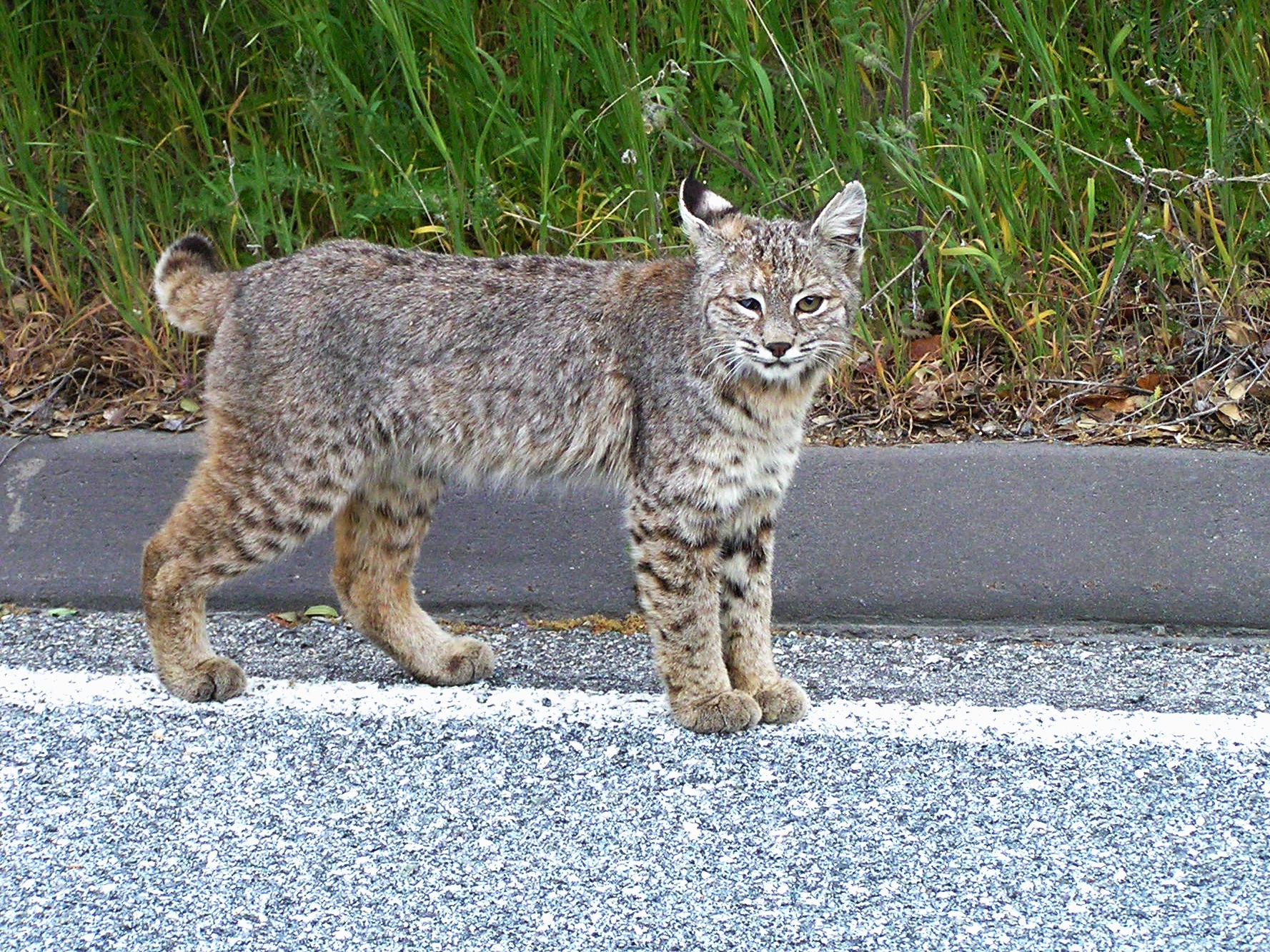In the latest saga of Northeast wildlife rabies virus conflict, a bobcat that mauled a golfer at a Connecticut golf course Thursday morning has been confirmed suffering from the virus.
Department of Energy and Environmental Protection (DEEP) officers tracked down the animal and euthanized it after they were called to a Mohegan Sun Golf Course in Sprague, Connecticut, after a bobcat attacked the unidentified golfer that morning.
According to reports, the wildcat jumped on the man's back while on the golf course. The victim's colleagues beat the animal off him with their golf clubs.
The animal apparently survived and left the scene. DEEP officers later tracked down the bobcat after following footprints.
According to the Hartford Courant, the animal was dispatched by an officer after being found in an open drain. The carcass was taken to UConn Medical Lab for testing where a veterinarian confirmed it was suffering from rabies.
The bobcat involved in Thursday’s attack after being dispatched. (Photo | CT-DEEP)
The golfer was treated at a local hospital.
The same bobcat is believed to have been involved in an attack on a horse less than a mile away from the casino golf course earlier the same morning. The horse sustained lacerations it its eye and neck.
The department noted that bobcat are common in the wild in Connecticut, but emphasized that attacks on humans are unusual.
Rarity Or Regularity?
According to a written statement from CT-DEEP, the last reported incident of a bobcat attack was in Bozrah in August of 2014. The animal involved in that incident was found to test positive for rabies.
Officials state bobcat attacks on people are rare, and while we here at F.C. tend to agree, we’re also having a hard time keeping up with the amount of reported wildlife attacks blanketing New England in recent months.
Three people in Vermont were involved in a rabid bobcat attack back in December. Vermont just confirmed its first rabid coyote attack two weeks ago. Massachusetts has had a consistent spell of human/coyote attacks, including one involving a teen in Norwell. An elderly New Hampshire woman beat off a rabid bobcat with a sickle in July of 2017. A father and son in Stow, Maine were attacked by a bobcat last May.
The most recent attack in Connecticut comes as state lawmakers are fighting to restrict or ban regulated hunting and trapping in the state.
There is currently no hunting or trapping season on bobcats in Connecticut. Trappers continue to assist DEEP Wildlife professionals with gathering important scientific data on live-captured bobcats. We reported about the ongoing project back in November: Read More.
In reference to the study, DEEP states on their website:
With the invaluable assistance of several Connecticut trappers, the DEEP Wildlife Division was able to live-trap bobcats as part of a research project that was initiated in 2017. All live-trapped bobcats were marked with yellow ear tags and important data were collected from each animal, including weight, age, and sex. Fifty (50) bobcats were fitted with GPS tracking collars, and Division staff members monitored these animals until the collars automatically detached from the animals on August 1, 2018. Assistance is currently needed to trap another group of bobcats for monitoring in 2019. Trapper cooperation in this study is essential to its success.
The news of this week’s bobcat attack comes as USDA Wildlife Services-APHIS continues to conduct rabies surveillance and vaccination attempts in northern New England. You can read our full report on the USDA’s rabies program here.
A message of note from Furbearer Conservation:
It should be strongly emphasized that Furbearer Conservation does not share stories of wildlife attacks for sensationalism, page clicks, or to bolster a false-need for hunting and cull. The future of the rabies virus, its impact on our native wildlife populations, and the safety of a public populous continuing to further encroach on needed natural habitat must continue to be reported on.
While rare, human/wildlife conflict continues to be reported, and, from our anecdotal point of view, seems to be increasing. As density-dependent diseases continue to spread, these situations directly tie in with the future of furbearer conservation endeavors in North America - and correlate with a need for regulated hunting and trapping practices on the landscape. We will continue to reference, report and critique them as we see fit.










Nature’s raw fury: A grizzly bear in Alberta locates and tears open a black bear den; attacks female bear with cubs. Warning: Potentially graphic content.